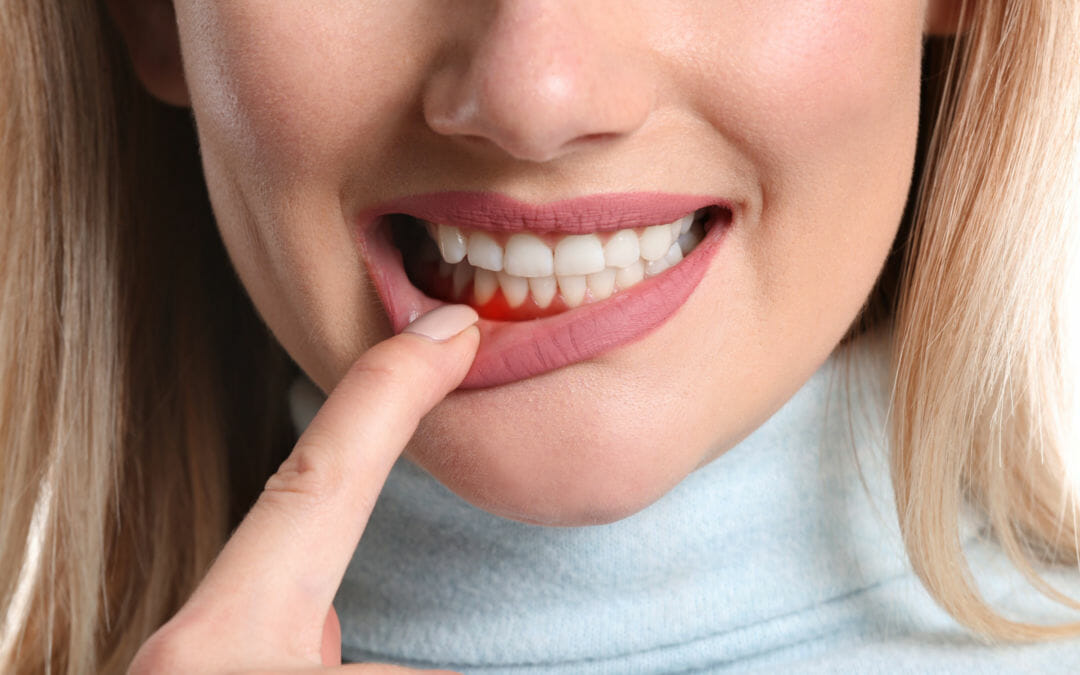Gum disease, or periodontal disease, is caused by harmful bacteria infecting the gums that support your teeth. In severe cases, it can lead to tooth loss. Early detection and proper care are crucial in maintaining healthy gums.
The Difference Between Gingivitis and Periodontitis
Gingivitis is the easiest type of gum disease to deal with and can be reversed if you take good care of your mouth. It appears as red, puffy gums that bleed easily. Without the right attention, gingivitis can turn into periodontitis, a more serious condition that attacks both the gum tissue and bone holding your teeth in place.
Common Signs and Symptoms of Gum Disease
To spot gum disease early, watch out for persistent bad breath, unusual taste in your mouth, tender or swollen gums that may bleed when brushing, loose teeth, receding gums, changes in your bite, or pus near the gum line. If you notice these signs, consult a dentist promptly for proper treatment.
Causes and Risk Factors
Gum disease can result from poor oral care, hormonal changes, and health conditions like diabetes or heart issues. Hormonal changes during puberty, pregnancy, and menopause can contribute too. Additionally, underlying health conditions and tobacco use increase the risk of gum disease.
How Poor Oral Hygiene Leads to Gum Disease
Not taking good care of your mouth can quickly lead to gum disease. When you don’t brush and floss well, plaque, a sticky substance full of germs, hangs around on your teeth. If it’s not cleaned off, it turns into tartar. Tartar is hardened plaque that gives even more space for germs to gather and grow. As these germs multiply, they hurt the gums by making toxins that cause swelling and infection. If this continues, it can seriously damage both the gums and bones underneath them, leading to periodontal disease.
Other Contributing Factors to Periodontal Disease
Besides not taking good care of your teeth, a few other things can lead to gum disease. Using tobacco products like cigarettes and chewing tobacco increases your odds of dental problems. A dry mouth is another risk, because saliva helps fight off acid and bacteria. On top of that, if someone has health problems that make their immune system weaker—like HIV/AIDS or cancer—they’re more likely to get gum disease, too.
Diagnosing Periodontal Disease
To diagnose periodontal disease, a dental professional uses a periodontal probe to examine the gums for inflammation, redness, swelling, or bleeding. X-rays may also be taken to assess bone loss and determine treatment severity.
Professional Dental Assessments
It’s essential to see your dentist regularly if you want to keep your mouth healthy and stop gum disease from progressing. The American Dental Association says that everyone should have dental check-ups at least two times a year. But if you’re more likely to get gum disease, you might need to go even more often. At these visits, the dental team will look at your teeth and gums, spot any early warning signs of trouble, and either treat them or send you to a specialist called a periodontist.
Tools and Tests Used in Diagnosis
Dentists and their teams have many tools to determine if someone has gum disease. At the top of the list is a periodontal probe, a skinny tool with marks like a tiny ruler, to measure how deep your periodontal pockets are. The deeper these pockets, the worse off your gums are. Dentists also run tests to see how much dental plaque you have. Based on these tests, they can determine the best way to tackle gum problems.
Effective Treatment Options
When dealing with gum disease, the goal is to control infection, reduce swelling, and prevent further damage. Non-surgical methods like scaling and root planing are common for cleaning around teeth and below the gum line. In severe cases, surgery may be necessary.
Non-Surgical Treatments for Gum Disease
Scaling gets rid of the plaque and tartar hanging around on your teeth and under your gums by using special tools that buzz away the bad stuff. Then there’s root planing, which smooths the roots of your teeth so bacteria can’t stick around. Depending on how severe the gum disease is, these procedures might take a few visits, but they’re great for calming down inflammation and helping your gums heal up nicely.
Surgical Treatments and When They’re Needed
When periodontal disease is severe, surgery may be necessary. Flap surgery lifts the gums to clean underneath, removing tartar and bacteria around the teeth roots. In cases of bone loss, bone grafting is performed to fill in lost bone and promote new bone growth. Tissue regeneration encourages new gum tissue growth. These surgeries are typically conducted by periodontists specializing in gum and dental issues.
Prevention is Key
Care for your teeth daily to maintain a healthy and prevent gum disease. Brush twice a day, floss, use mouthwash, and see your dentist every six months.
Daily Oral Care Tips
Keeping your teeth and gums healthy is crucial to avoid periodontal disease. Here are some simple tips:
- With a soft-bristled brush and fluoride toothpaste, brush your teeth twice daily for two minutes.
- Floss daily to get rid of plaque and bacteria that hide between your teeth and the gum line.
- Rinse with an antimicrobial mouthwash.
- Replace your toothbrush every three to four months or when the bristles wear out.
- Eat well-balanced meals while cutting down on sweets and acidic drinks.
- Make sure you go in for check-ups and cleanings regularly.
The Role of Professional Dental Care in Prevention
Regular dental check-ups are crucial for preventing gum disease and maintaining oral health. Dentists can detect early signs of gum disease, remove plaque and tartar, and provide treatments like deep cleaning or surgery if needed. Seeing your dentist regularly reduces the risk of developing severe periodontal issues in the future.
Lifestyle Adjustments for Healthier Gums
Eating a healthy diet and avoiding harmful habits can significantly improve gum health. Fruits, veggies, and lean meats are beneficial for your gums and overall oral health. Quitting smoking and reducing alcohol intake also benefit gum health.
Diet and Nutrition Tips
Eating right and getting proper nutrients is vital for healthy gums. Here’s how:
- Eat fruits and veggies rich in vitamins C and E to keep your gums healthy.
- Focus on calcium-rich foods like dairy, green veggies, and fortified cereals to strengthen teeth and bones.
- Include omega-3 fats from fish, flaxseeds, and walnuts to reduce gum inflammation.
- Limit sweets and acidic foods to prevent plaque buildup.
Quitting Smoking and Reducing Alcohol Intake
Both tobacco and alcohol increase the risk of gum disease by hindering the body’s ability to fight infections and reducing saliva production. By avoiding cigarettes and moderating alcohol intake, you can significantly decrease the likelihood of gum disease and enhance your oral hygiene.

